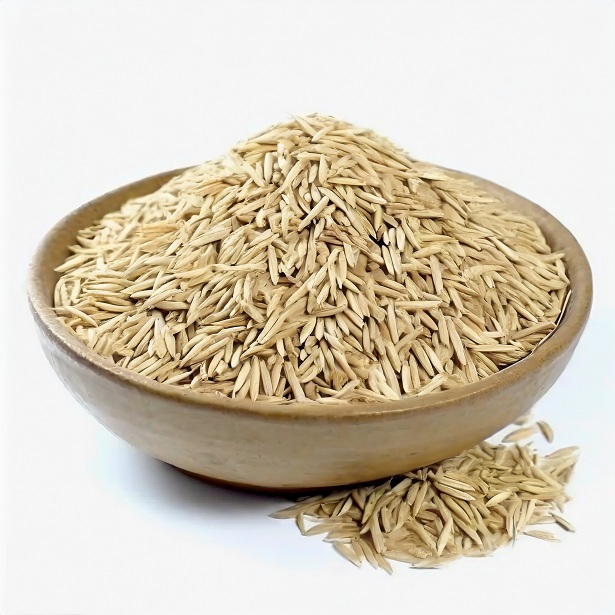Whole grain basmati rice is a nutritious and delicious option for those seeking a healthier alternative to traditional white rice. When considering how to cook wholegrain basmati rice, start by rinsing the rice thoroughly to remove excess starch. For a foolproof method, use a ratio of 1.5 cups of water to 1 cup of wholegrain basmati rice. Bring the water to a boil, add the rice, then reduce the heat to a simmer and cover for about 40–45 minutes.
If you’re wondering where to buy whole grain basmati rice, many grocery stores and health food stores carry this variety. Additionally, online retailers often offer a convenient option for those with limited access to specialty stores. When purchasing, ensure the packaging specifies “whole grain” to guarantee the nutritional benefits.
Ever wondered what does whole grain basmati rice look like? It has a slightly brown color and retains the bran layer, which contains essential nutrients. To confidently determine how to know if basmati rice is whole grain, inspect the packaging for terms like “100% whole grain” or “whole grain basmati.” These indicators guarantee you’re getting the wholesome goodness of the entire grain. Finally, estimating how much whole grain basmati rice for 4 people is simple—just double the ratio to 3 cups of water for 2 cups of rice.
Whole grain basmati rice?
Whole grain Basmati rice is a type of rice that has not undergone the milling process to remove the bran layer, which contains the outer husk, germ, and bran. This means that it retains more of its natural nutrients compared to white rice, which has been polished and stripped of some of these nutrients.
Basmati rice is a long-grain rice variety known for its aromatic fragrance and distinctive flavor. When it’s in its whole-grain form, it is considered a healthier option because it contains more fiber, vitamins, and minerals than its white counterpart. The fiber content in whole-grain Basmati rice can contribute to better digestion and may help regulate blood sugar levels.
Here are some key points about whole-grain Basmati rice:
-
Nutritional Content: Whole-grain Basmati rice is a good source of complex carbohydrates, fiber, and various essential nutrients. It contains vitamins such as B vitamins, minerals like magnesium and phosphorus, and antioxidants.
-
Fiber: The bran layer in whole grain rice is rich in dietary fiber. Fiber is important for digestive health, as it helps prevent constipation and promotes a feeling of fullness.
-
Low Glycemic Index: Whole grain Basmati rice has a lower glycemic index compared to white rice. This means it has a slower impact on blood sugar levels, which can be beneficial for those looking to manage or prevent diabetes.
-
Cooking Time: Whole grain rice, including whole grain Basmati rice, typically takes longer to cook than white rice because of the presence of the bran layer. However, the slightly longer cooking time is worth it for the nutritional benefits.
-
Texture and Flavor: Whole-grain Basmati rice has a chewier texture compared to white Basmati rice. It also has a nuttier flavor due to the presence of the bran layer.
When preparing whole-grain Basmati rice, you may want to rinse it before cooking to remove excess surface starch. Additionally, soaking the rice for a few hours or overnight can help reduce the cooking time.
In summary, whole-grain Basmati rice is a nutritious option that provides more fiber and nutrients compared to its white counterpart. It’s a wholesome choice for those seeking to incorporate healthier grains into their diet.
Buy Whole whole-grain basmati Rice
FAQs
-
How to cook whole grain basmati rice?
- Rinse the rice thoroughly under cold water.
- Soak the rice for about 30 minutes to an hour, if possible.
- Use a ratio of 2:1 water to rice for cooking.
- Bring the water to a boil, add the rice, and reduce the heat to simmer.
- Cover and cook for around 40–45 minutes, or until the rice is tender.
- Fluff the rice with a fork and let it rest for a few minutes before serving.
-
Where to buy whole grain basmati rice?
- You can find whole grain basmati rice at most grocery stores, health food stores, or specialty markets.
- Online retailers, such as Amazon, Walmart, or specialty food websites, may also offer a variety of options.
-
Where can I buy whole grain basmati rice?
- Whole grain basmati rice is commonly available at supermarkets, health food stores, and organic markets.
- Check the rice aisle in your local grocery store, or explore the health food section for organic options.
-
What does whole grain basmati rice look like?
- Whole grain basmati rice has a light brown color and retains the bran layer, which gives it a slightly chewy texture compared to white rice.
- The grains are longer and slender, characteristic of basmati rice.
-
How much whole grain basmati rice for 4 people?
- A standard serving size is about 1/4 to 1/3 cup (uncooked) per person.
- For four people, you’ll need approximately 1 to 1.5 cups of uncooked whole-grain basmati rice.
-
How to know if basmati rice is whole grain?
- Check the packaging for labels like “whole grain” or “brown rice.”
- Look for a light brown color and the presence of bran on the rice grains.
- Read the ingredient list to ensure it specifies whole-grain basmati rice without any mention of being processed or refined.
Feel free to ask if you have any more questions or need further clarification!



